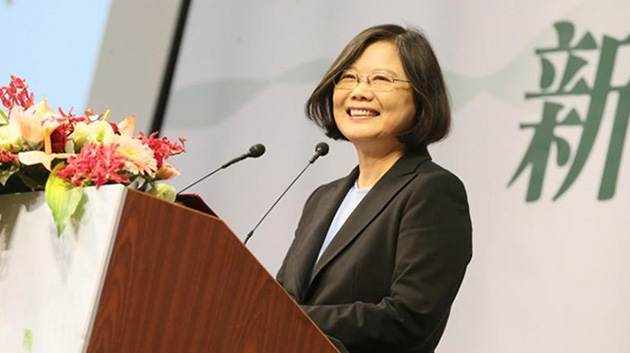US-Taiwan First Phone Conversation
What Will Become of China relations?
By Presidential Office (11.28) Address by the President at the Second International Innovation Forum on “Presidential Innovation Award”
U.S. President elect, Donald Trump, recently spoke via telephone with Taiwanese President Tsai Ing-wen. It was the first time any U.S. President or President-elect held talks with a Taiwanese president since the U.S. formally recognized China in 1979. The Washington Post reported that the talk had allegedly been planned a few weeks prior.
Trump’s recent actions have been crushing China’s honor. Tsai is scheduled to have talks in New York with Reince Priebus, Trump’s Chief of Staff, in January next year. Priebus is one of the central individuals supporting Trump’s Middle East policy, and it looks like the U.S.-Taiwan ties will soon grow ever stronger.
Trump’s approach towards Taiwan is gathering attention for its contrast to the ‘sitting on the fence’ attitude the U.S. had adopted in relation to Taiwan until now. Seeing the following summary of the history of the U.S.-Taiwan relationship, we can really see how unusual Trump is in comparison to prior U.S. administrations:
1971:
Due to a proposal by Albania, the UN General Assembly decides to transfer the Republic of China’s (Taiwan) membership of the UN Security Council to the People’s Republic of China. The Republic of China withdraws from the UN in protest.
1972:
U.S. President Nixon makes a sudden visit to Beijing and expresses his intension of recognizing the People’s Republic of China as a country. It was part of a plan to separate China from the USSR during the Cold War.
January 1979:
The U.S. officially recognizes the People’s Republic of China as a country, and they begin formal diplomatic relations. Henceforth there were no meetings between the U.S. and Taiwan presidents.
April 1979:
The Taiwan Relations Act is signed making it possible to provide armaments etc. to the Republic of China and the U.S. demonstrated their intension to sustain substantial diplomatic relations. And the irresolute stance continues on the part of the U.S: while recognizing the People’s Republic as the official ‘China’, the status quo continues between Taiwan and the U.S.
1995:
The Third Taiwan Strait Crisis. The People’s Republic launches a missile in protest to President Lee Teng-hui, who had visited the U.S. out of a desire for closer relations with the U.S. The U.S. responded by an armed restraint of the People’s Republic by deploying aircraft carriers.
1997:
The U.S. is drawn to China’s market and starts to lean towards China, pushing for China’s membership in the WTO.
2016:
Trump calls Tsai.
The above summary clearly shows that the U.S. established ties with China to separate them from the USSR, but also tried to maintain connections with Taiwan. And when China-Taiwan relations began to boil, the U.S. helped Taiwan. However, soon after that, when China’s economy began to grow, the U.S. turned to China.
The U.S.-Taiwan relations until now have been inconsistent. In contrast, China has long been planning to annex Taiwan.
We expect improvements in the U.S.-Taiwan relation with the coming of Trump as president, and his Taiwan leaning anti-China diplomacy.
Trump’s policy would create an advantageous international situation for Japan. The oil import sea-lane route passes close to Taiwan, and if Taiwan were annexed by China, the route could be cut off and Japan would be out of energy.
The best of possible strategies would be for the U.S., Taiwan and Japan to establish and maintain friendly relations, and for Japan to recognize Taiwan as an independent country. This would formally bring Taiwan back into the international community, and the three countries could cooperate to stop the expansion of China.


![Japan! Regain Your Samurai Spirit: A Message from the Guardian Spirit of Lee Teng-hui,Former President of the Republic of China (Spiritual Interview Series) [Paperback] by Ryuho Okawa/Buy from amazon.com](/files/2016/12/161209_amazon.jpg)

















